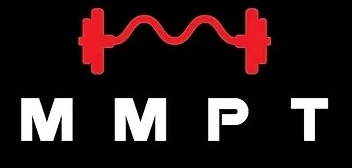
Building Muscle
Building Muscle: A Comprehensive Guide to Maximizing Gains
Building muscle isn't just about lifting heavy weights day after day. It's about creating a smart, sustainable program that challenges your body while allowing for adequate recovery and growth. Here's a breakdown of how to structure your muscle-building routine for optimal results.
1. Progressive Overload: The Key to Growth
To build muscle, you need to consistently increase the challenge your body faces. Progressive overload is the process of gradually increasing the demands on your muscles through various methods:
- Increasing weight: Gradually lifting heavier weights over time.
- Increasing reps: Doing more repetitions with the same weight.
- Increasing sets: Adding more sets to your exercises.
- More range of motion: Increasing your range of motion can put more stress on the muscle, leading to more growth.
- Increasing time under tension: Slowing down the tempo of your reps to increase the time the muscle is under tension.
The goal is to push your muscles past their previous limits to stimulate growth. Without progressive overload, you won’t see the gains you're aiming for.
2. Quality Over Junk Volume: More Is Not Always Better
Many people fall into the trap of thinking more is always better when it comes to sets and reps. However, junk volume—extra sets or exercises that don't contribute to muscle growth but add unnecessary fatigue—can actually hinder your progress and lead to overtraining.
Instead of simply adding more sets, focus on the quality of your training. Ensure each set is performed with good form and with a level of intensity that challenges your muscles. You should aim for sufficient volume (in terms of sets and reps) that promotes growth, but not excessive volume that drains your energy and affects recovery.
Remember, overtraining can reduce your performance and lead to burnout, slowing your overall progress. It’s not just about pushing harder; it’s about pushing smarter.
3. Deloads: Keep Your Gains in Check
When you’re pushing hard to build muscle, it’s easy to think more is always better. But here’s the thing—if you don’t give your body time to recover, you’re just setting yourself up for burnout or injury. Deloads are an essential part of any muscle-building program.
A deload is a period of reduced intensity or volume in your training to allow your body to fully recover. Think of it as giving your muscles and central nervous system a “reset” before you ramp up again.
How I do it:
- For muscle-building deloads: I usually keep the weight the same but reduce the volume by halving the reps (e.g., if you normally do 4 sets of 8–10 reps, you might do 4 sets of 4–5 reps with the same weight). While you could also reduce sets, I typically find cutting reps provides the best balance for maintaining intensity without overloading the body, allowing for full recovery.
- For strength deloads: I reduce the load by 10–15% depending on your strength level and halve the volume by reducing reps (e.g., if you normally do 4 sets of 5 reps, you’ll do 4 sets of 2–3 reps with the reduced weight). This helps you recover while keeping your body accustomed to heavy training.
Why it matters:
- Prevents overtraining: Deloads are essential for avoiding the effects of overtraining by giving the body a chance to recover. This ensures you're not pushing yourself past your limits, which can lead to burnout and setbacks.
- Promotes long-term progress: Training hard week after week without rest will eventually lead to a plateau. Deloads keep you fresh and primed for more progress in the long run.
- Improves recovery: They give your muscles, joints, and nervous system the time they need to fully recover, so when you hit the gym again, you’ll be ready to smash your personal bests.
Typically, deloads should be scheduled every 4–8 weeks, depending on the intensity of your program and how you’re feeling. It’s about listening to your body. If you’re constantly fatigued, struggling to recover, or noticing performance drops, it might be time for a deload.
4. Volume and Intensity: Striking the Right Balance
To optimize muscle growth, the balance of volume and intensity is key. Volume refers to the total amount of work you're doing (sets and reps), while intensity refers to the effort you're putting into each set. The two need to work in harmony for you to see the best results. Too much volume without enough intensity can lead to wasted effort, while too much intensity without enough volume can lead to overtraining.
Volume:
Research suggests that 10–20 sets per muscle group per week seems optimal for muscle growth. This range provides enough stimulus for hypertrophy without overwhelming your body and leading to overtraining. The important thing is to ensure that each set is performed with enough intensity to actually challenge the muscle.
Intensity:
Training with a high level of intensity, typically around an RPE of 7–9 or 70–85% of your 1RM, is necessary for muscle growth. The key is to push your muscles to fatigue while still maintaining good form.
Finding the right balance of both allows you to work your muscles hard enough to stimulate growth, while also giving your body the recovery it needs. With proper volume (10–20 sets per muscle group) and intensity, you'll set yourself up for continuous muscle growth over time.
5. The Right Nutrition: Fueling Muscle Growth
Nutrition plays a huge role in your muscle-building journey. You can train as hard as you like, but without the proper fuel, your body won’t be able to recover and build muscle effectively. Here’s how to structure your nutrition:
- Protein: This is the most important macronutrient for muscle growth. Aim for around 1.6–2.2 grams of protein per kilogram of body weight to support recovery and muscle repair.
- Carbohydrates: Carbs provide energy for your workouts and help with muscle recovery. Focus on complex carbs like whole grains, fruits, and vegetables.
- Fats: Healthy fats are crucial for hormone production, including testosterone, which plays a key role in muscle growth. Aim to get about 20–30% of your daily calories from fats.
- Calorie Surplus: To build muscle, you need to eat in a slight calorie surplus—meaning consuming more calories than you burn. This provides the extra energy required to support muscle growth. However, avoid excessive calorie surpluses as they can lead to excessive fat gain. A modest surplus (around 200–500 calories per day) is typically ideal.
6. Training Frequency and Split: What's Best for You?
Training frequency is key to muscle growth. The more advanced you are, the more you can handle a higher training frequency. But whether you train 3 days a week or 6 days a week, you can make progress—as long as the total weekly volume and intensity are appropriate for your level.
- Beginners: Full-body workouts or upper-lower splits often work best because they allow for sufficient recovery between sessions.
- Intermediate lifters: May benefit from more specialized splits, like push-pull-legs, to target specific muscle groups more frequently.
- Advanced lifters: Can handle more complex splits (e.g., upper-lower, body part splits) due to the higher training volume they can manage.
The most important factor in choosing your split is the number of days you can realistically commit to and your training age. Advanced lifters generally benefit from a split that allows for greater frequency and more targeted volume for specific muscle groups.
7. Training Intensity: Push Hard, But Smart
Training intensity is crucial for muscle growth. Pushing yourself hard is important, but you need to do it smartly. Overtraining can lead to burnout and decreased performance, so it’s essential to find that sweet spot between pushing yourself to the limit and allowing your body enough recovery to adapt and grow.
This can be achieved by focusing on progressive overload and maintaining an RPE of 7–9 for most exercises. Intensity should be high enough to stimulate muscle fibers but not so high that it causes injury or leads to overtraining.
8. Rest and Recovery: Don’t Skip This Part
Building muscle doesn’t happen in the gym—it happens while you rest. Adequate sleep, nutrition, and recovery are crucial for muscle repair and growth. Rest days give your body the chance to recover and adapt to the stresses you put it under during training.
You should also incorporate active recovery into your routine, such as light cardio or stretching. These activities will help to reduce muscle soreness and improve circulation, promoting faster recovery.
9. What You Get With Muscle Building Coaching
If you want to stop spinning your wheels and start seeing results in the mirror, here’s what my coaching includes:
- Training tailored to your physique goals
- Structured progressive overload and periodisation
- Nutrition guidance to match your current phase (surplus or recomp)
- Check-ins and adjustments where required
- A coach who actually looks at your form and progress—and genuinely wants to help you achieve what you are after from the gym
No cookie-cutter PDFs. No gimmicks. Just smart training, real feedback, and a system designed to work for your lifestyle.
Want to Build Muscle Without Wasting Time?
👉 Use the Calorie & Macro Calculator to find your starting point
👉 Or apply for online coaching and get a program made specifically for your goals
Let’s build size that lasts—and strength that shows.
